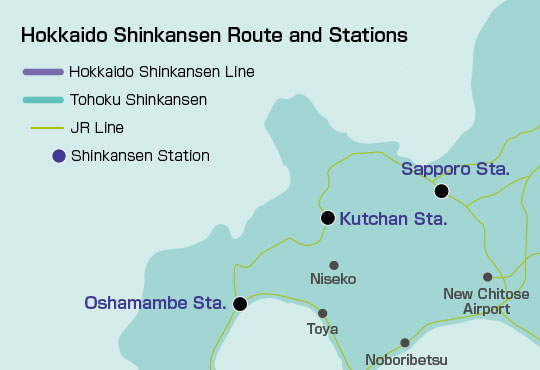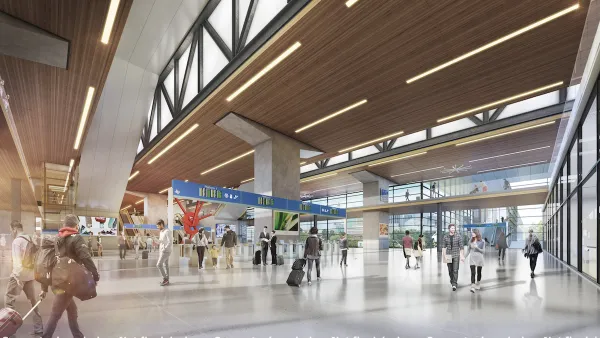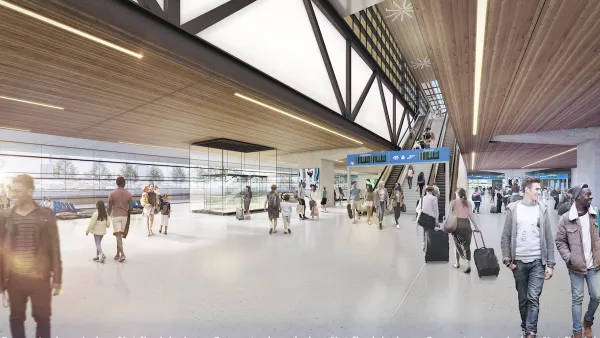As of Saturday, Hokkaido, Japan's northernmost island, was connected to Tokyo by the newest addition to Japan's iconic Shinkansen bullet trains. The 513-mile route includes 33.4 miles in "the world's deepest operational main-line rail tunnel."
"It was last Saturday, at a precise 6.35am, that a sleek new bullet train glided out of Hakodate en route for Tokyo – marking the official launch of an extension of the nation’s famed high-speed rail network to Hokkaido island for the first time," writes The Telegraph's Japan expert, Danielle Demetriou.



Credit: Hokkaido Railway Company
Note: Travel times are for connector train going north from Hakodate, terminal for the new Hakodate-to-Tokyo Shinkansen line. "It’s another approximately 20 minutes by a connector train into Hakodate proper," writes Forbes' business travel blogger, Andrew Bender. An extension to the island's largest metropolis, Sapporo, a familiar name for beer-drinkers, is scheduled to be built by 2030.
According to The Japan Times, "(t)he train uses the undersea Seikan Tunnel linking Hokkaido with Aomori" on the main island of Honshu.
The tunnel opened in 1988 and until recently was used by overnight train services. The line through the tunnel is also shared with local trains.
"And so it was with a regional sigh of relief that the new bullet train extension finally opened last week – slashing the 539 mile Hakodate-Tokyo journey from five-and-a-half hours to four hours two minutes, at its fastest," notes Demetriou.
lt would be an understatement to write that people were excited, or that the train is a great symbol of pride for the Japanese people. "Tickets for the very first bullet train sold out in a suitably high speed 25 seconds when they went on sale last month," writes Demetriou.
According to Reuters, "Japanese media reported that over 500 people gathered to see the first Hokkaido Shinkansen leave the station early in the morning on Saturday." "The futuristic, needle-nosed 10-car trains can seat up to 731 passengers in three classes of service," notes Bender.
"Travel times would be shorter were it not for speed restrictions in the tunnel under the strait between Hokkaido and Honshu," writes Bender, restricting speed to 160 miles per hour.
While competitive with flying (about $40 cheaper), it's not as fast. Even "after allowing time for check-in, security and travel time to and from the city centers," flying is about 40 minutes faster, notes Bender.
FULL STORY: Japan's bullet train reaches Hokkaido — Mar 30

Analysis: Cybertruck Fatality Rate Far Exceeds That of Ford Pinto
The Tesla Cybertruck was recalled seven times last year.

National Parks Layoffs Will Cause Communities to Lose Billions
Thousands of essential park workers were laid off this week, just before the busy spring break season.

Retro-silient?: America’s First “Eco-burb,” The Woodlands Turns 50
A master-planned community north of Houston offers lessons on green infrastructure and resilient design, but falls short of its founder’s lofty affordability and walkability goals.

Test News Post 1
This is a summary

Analysis: Cybertruck Fatality Rate Far Exceeds That of Ford Pinto
The Tesla Cybertruck was recalled seven times last year.

Test News Headline 46
Test for the image on the front page.
Urban Design for Planners 1: Software Tools
This six-course series explores essential urban design concepts using open source software and equips planners with the tools they need to participate fully in the urban design process.
Planning for Universal Design
Learn the tools for implementing Universal Design in planning regulations.
EMC Planning Group, Inc.
Planetizen
Planetizen
Mpact (formerly Rail~Volution)
Great Falls Development Authority, Inc.
HUDs Office of Policy Development and Research
NYU Wagner Graduate School of Public Service




























